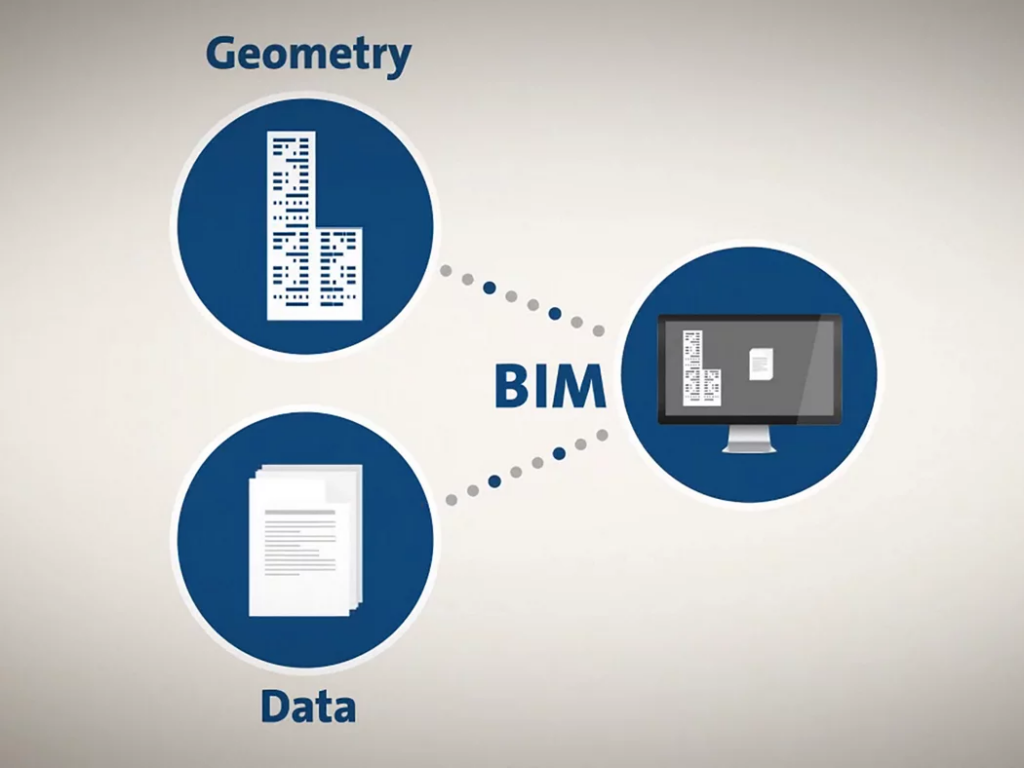BIM explained – Building Information Modelling as the future of construction
What is Building Information Modelling, in short BIM, and why should you understand it?
Building Information Modelling are the words behind this acronym and describe the creation of visual models which carry the information to be shared. Here stands the key of its definition; visualisation with information built-in to be part of a collaborative project.
BIM is the combination of graphic elements with data built-in;
It is visualisation plus information.

Index
Visualisation
What is easier; explain an image or see a photo of it? And what does it make you imagine better an object, see it in a plain draw or a 3D one? In the same way that a picture is worth a thousand words, a 3D model is worth a thousand pictures.
BIM is the present and unstoppable future of design. Our life is in three dimensions; we see objects with height, length and width, regardless of the perspective. Implementing BIM into the design will give the user the chance to see the full visualisation of the object at glance. All in one view, that simple.
Before, we needed to have 3 different perspectives to figure out how the object will be, and now, this is possible to combine all into a 3D compact and simple design which will allow you to see the reality before it even happens. You can see how things will be before you get them, to make sure that the choice you make is the right one for your needs.
Information
The compilation of data into the products has been a challenge. Declarations of Performance (DOP), Technical Data Sheets (TDS) and thousands of files with more comments, tables and without any solid structure across different companies. Combining all of them, you will get a complete set of the product you desire including the different manufacturer’s details on the design for easy use of it.
In the BIM files, you will see not only the visualisation of the product but also its properties such as thermal, acoustic, fire protection and sustainability for example. The options are limitless as new parameters and fields can be added to fill the needs of manufacturers, making them all together into one file which provides all the information rather than several reports and documents.
What is BIM?

Building Information Modelling is not the future, it is the presence of the construction industry. The methodology combines 3D views and implements data management inside it, making the whole design a complete pack with all the information included ready to share.
With nowadays software, simulations can be carried out to assess their functionalities, run the energy test and check the environmental impact of the products before you even get it. Like this, we can predict the possible clashes and forecast potential hazards, simulating possible case scenarios before the event appears, as well as avoid expensive miscalculations.
Who uses BIM?
The AEC sector. Technical designers such as architects or engineers work along with the construction and services companies to create a realistic model which will show how the building or object which is being represented will look before it is done. In this way, the concept of the object of design will be achieved with more clarity, understanding, coordination and specifications, as BIM includes all the technical areas into their design so different aspects can be considered during the construction and development phases.
Why should manufacturers invest in BIM?
Coordination and data sharing have become more and more important in project management. Specific areas develop and they all need to be coordinated to provide a solid result to the customer in the end. BIM helps with that, and that is why manufacturers should make BIM so important to provide a wide range of BIM catalogues to their clients, so they can get all the building and product data in a few clicks, without getting lost on several files and documents.
Digital information increases the need to access shared data and BIM joins all into a single element which rich visualisation and data information. The AEC works more and more with BIM software from the design phase, so it is very important to get to them at that moment.

How manufacturers should implement it?
The production of BIM catalogues with all the manufacturer’s information is the primary goal. To provide our customers with all they need in a simple and compact set of data, along with a smooth visualisation of the product or system itself.
Independent BIM libraries are growing very fast, reaching huge numbers of downloads of products from different manufacturers. So, having one, will increase the credibility of the brand, provide accurate data and monitor the use to create potential leads from the downloads.
What else can BIM provide?
BIM is a very powerful word and has several perspectives to be analysed. It is not only a good-looking 3D representation; it is not complex software, and it is not used only to design.
BIM is a technology. It is something more powerful and wide that covers several processes from conception to demolition, coordinating all the different steps like construction or maintenance and making all the parties involved in a project collaborate.
Therefore, the progressing implementation of BIM into a company will make it more agile, adapted and strong firm in the sector. Not only a BIM catalogue for the manufacturers’ products is the solution that BIM offers, but it can also open thousands of doors to new opportunities and make the company part of the collaborative cloud of the digital world which is being developed.
Author: Enrique Nadales Clavero, Tequma & TylkoAdvisors

Comments are closed.